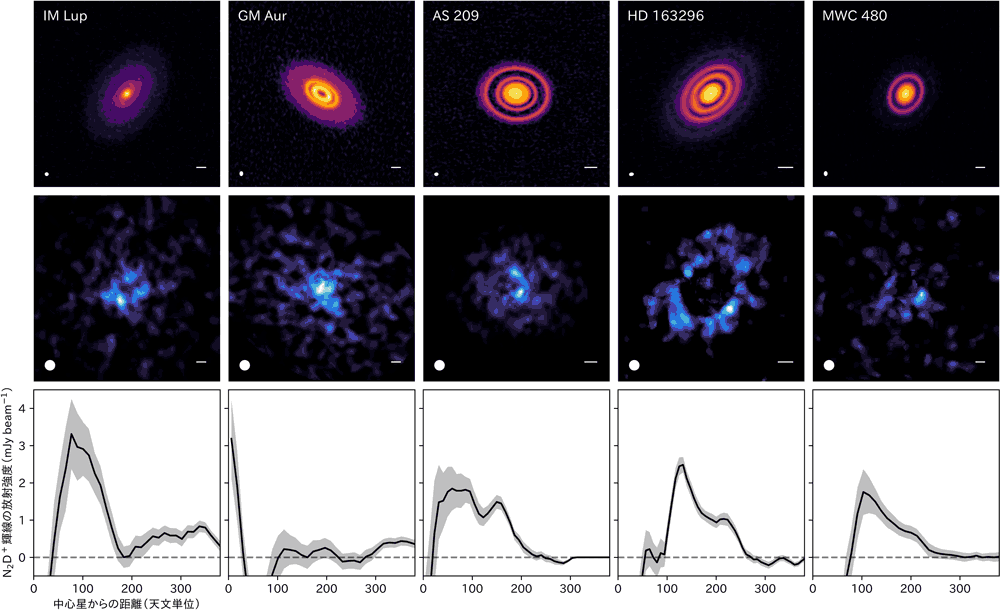Disclaimer: machine translated by DeepL which may contain errors.
~ Message from a graduate student~.
Chemistry of protoplanetary disks explored by ALMA telescope
 |
| Yoshihide Yamato |
| Department of Astronomy, 1st Year Doctoral Student |
| Birthplace Fukui Prefecture |
| High School Fujishima High School, Fukui, Japan |
| Department of Astronomy, Faculty of Science, The University of Tokyo |
How did the Earth and the solar system in which we live originate in the universe? This question is probably one of the most fundamental of all human questions. Unfortunately, we cannot go back in history and directly explore the Earth or the solar system as it was when it was first born. Instead, astronomers have looked to the stars in the night sky for the answer to this question. Around sun-like stars, a disk of gas and a small amount of dust (protoplanetary disk) is formed at the time of their birth. The protoplanetary disk is the very site of planetary birth, and detailed studies of its physical structure and chemical composition will provide clues to understanding the process of Earth and solar system formation in the universe.
I am particularly interested in the chemistry of protoplanetary disks, and have conducted observational research using radio telescopes. Disks are very small in appearance, so high resolution is essential for detailed observations. High sensitivity is also essential to detect faint radio waves from various molecules, which are indicators of chemical composition. The ALMA telescope, built in the Atacama Desert in Chile, is a virtual giant telescope with 66 antennas that can achieve both high-resolution and high-sensitivity at the same time. In my previous work, I used the high-resolution and high-sensitivity data obtained from a large-scale observation project with ALMA to study the distribution of deuterium (D)-containing molecules (N2D+) in five disks in detail (Figure). Interstellar molecules are known to be rich in deuterium-containing molecules compared to the elemental ratios of the universe, and this phenomenon is called deuterium enrichment. Since the same phenomenon is observed in solar system materials such as earth's seawater, the possibility that solar system materials have their origin in interstellar materials has been discussed. I have succeeded in detecting and quantitatively determining the abundance of N2D+ molecules in four disks by applying a method that utilizes the mechanical motion of the disk gas. As a result, it was found for the first time that N2D+ molecules are mainly located in the low-temperature region outside the disks and that the deuterium enrichment (N2D+/N2H+) is very high. This is evidence of efficient deuterium enrichment in the disk. In other words, the protoplanetary disk, the site of planetary birth, is also the site of rich chemical evolution from interstellar material to planetary material.

(Upper) Images of thermal radiation from dust in five disks observed with ALMA. (Middle) Intensity distribution of the observed N2D+ emission lines. In the upper and middle panels, the white ellipse in the lower left represents the spatial resolution of the observation, and the white line in the lower right represents the scale of 50 AU. (Lower) Radial intensity distribution of N2D+ emission lines. The emission is weak near the center and strong outside the disk. The data were prepared from Öberg et al., Astrophysical Journal Supplement Series, 257, 1 (2021) and Cataldi et al. 10 (2021).
The ALMA telescope has been providing us with astonishing observations since it started its operation in 2011 due to its high performance. The above observational chemical studies of protoplanetary disk scales are also cutting-edge research made possible by the high resolution and sensitivity of ALMA. The most exciting moment for me in my research is when I actually obtain observational data and realize that there are important observational results lying dormant in the data. I think this excitement is the real thrill of observational research that only those who have direct contact with observational data can experience. I would like to continue to make maximum use of ALMA and the next generation of telescopes that will be constructed in the future to open up new frontiers that no one has yet seen.


